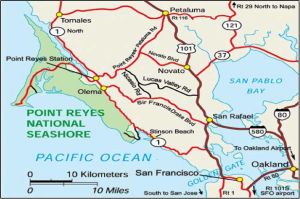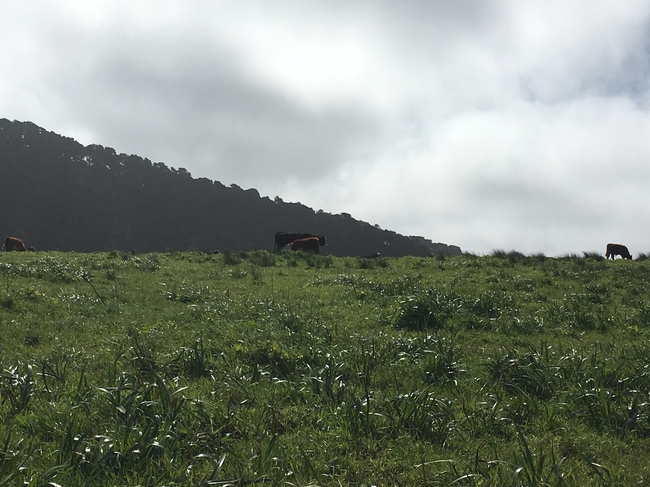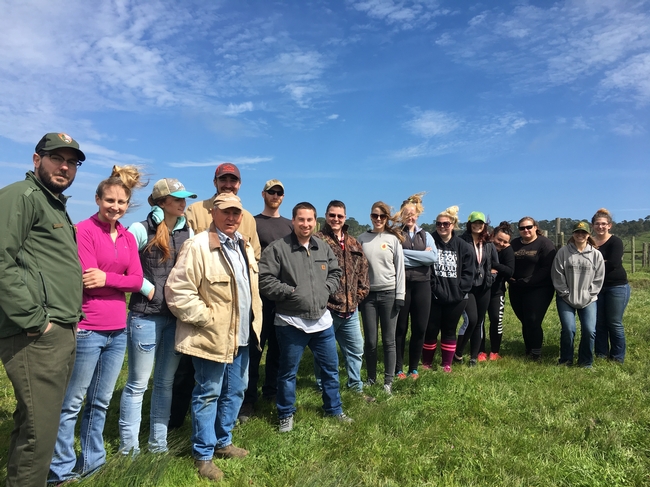
The class learned about the direct link between urban consumers and local food producers, providing a powerful conduit for educating the public about the importance of local food production and rangeland management. Sonoma and Marin Counties are perfect models for demonstrating how
preserving family farms contribute to
social, economic and ecological sustainability at
local, regional and even national levels.
Ranching PRNS, albeit smaller scale, remains a local industry, which provides job creation, training and business succession, and market expansion for many other ranchers and farmers.
Through the 1980s and 1990s and into the early 2000s, efforts to conserve threatened and endangered (special status) species on western rangelands often meant removing livestock ranching. Research findings, demonstration results, and failed conservation efforts in recent years involving endangered species has supported the continuation of livestock ranching and the reintroduction of grazing to some rangelands that were “protected” through grazing removal. At the landscape level,
research has demonstrated that livestock ranching
maintains extensive, open spaces by
reducing land use conversion, fragmentation of habitat,
and vegetation type conversion from invasion of brush.
Threats to native biodiversity, including special-status species, are likely to increase with removal or decrease of grazing. Research and experience have shown that grazing is strongly linked to maintaining habitat for some special-status species on PRNS lands, while they have been inconclusive for others. Sonoma alopecurus (Alopecurus aequalis var. sonomensis) is found in eight naturally occurring populations in Sonoma and Marin Counties; the four sites in Marin County all occur at PRNS and are all grazed by cattle; Sonoma spineflower found solely in a grazed pasture at PRNS. Tiburon paintbrush and Marin dwarf flax occur on serpentine grasslands, with six occurrences of Marin dwarf flax on Golden Gate National Recreation Area (GGNRA) grazing lands. PRNS staff concluded, “Marin dwarf flax may benefit from a moderate level of cattle grazing through the reduction of taller competing vegetation as the flax is subject to shading by competing grasses or may be suppressed by build-up of thatch from previous year's herbage if left ungrazed.” (USNPS 2001).
Documented research, along with good stewardship provided by generational ranchers, has demonstrated the benefits provided to the ecosystems at Point Reyes National Seashore.
Reference:
U.S. National Park Service. 2001. Biological Assessment on the Renewal of Livestock Grazing Permits in Point Reyes National Seashore and the North District of Golden Gate National Recreation Area Marin County, California. 65 pp.
Attached Images:

